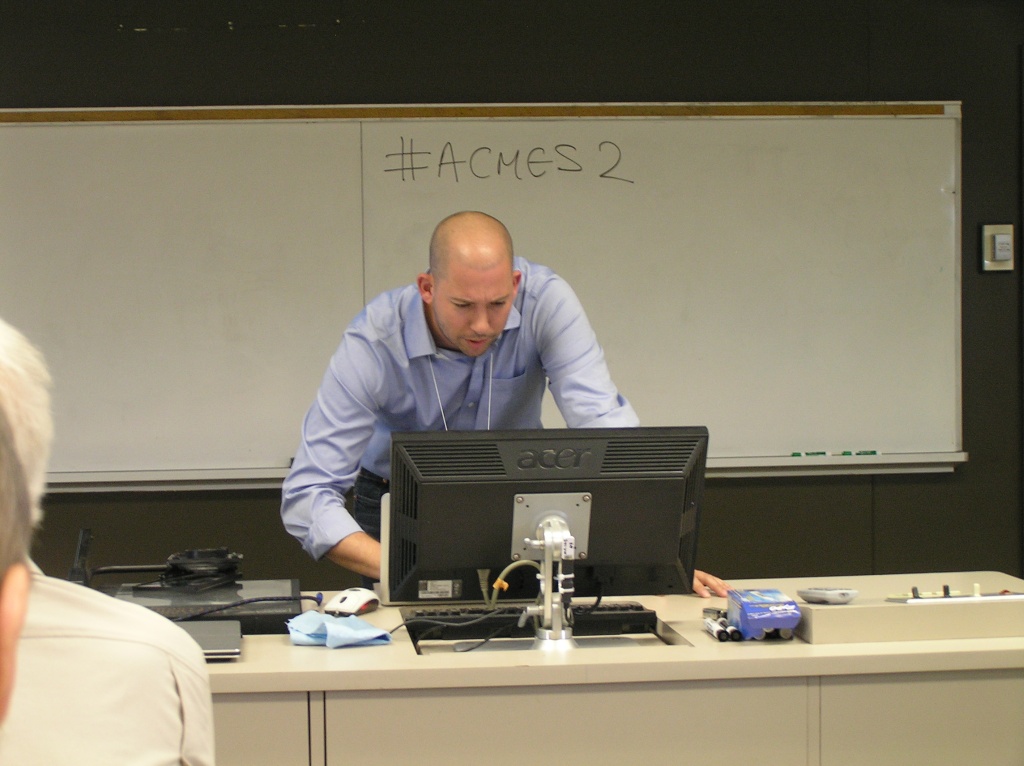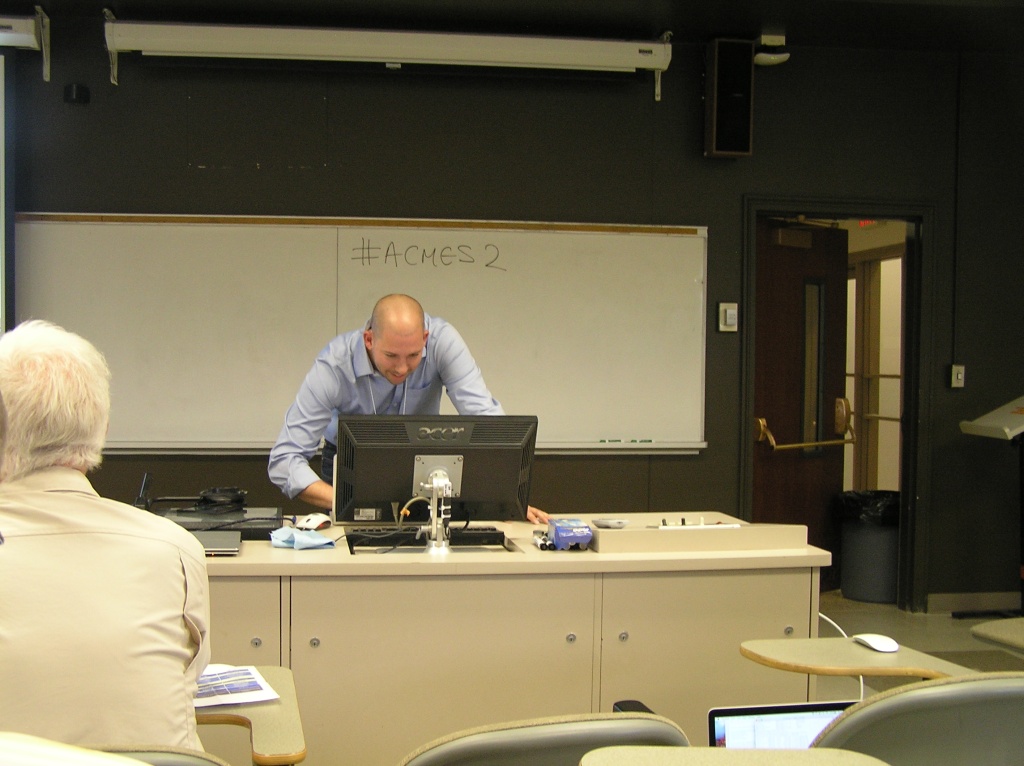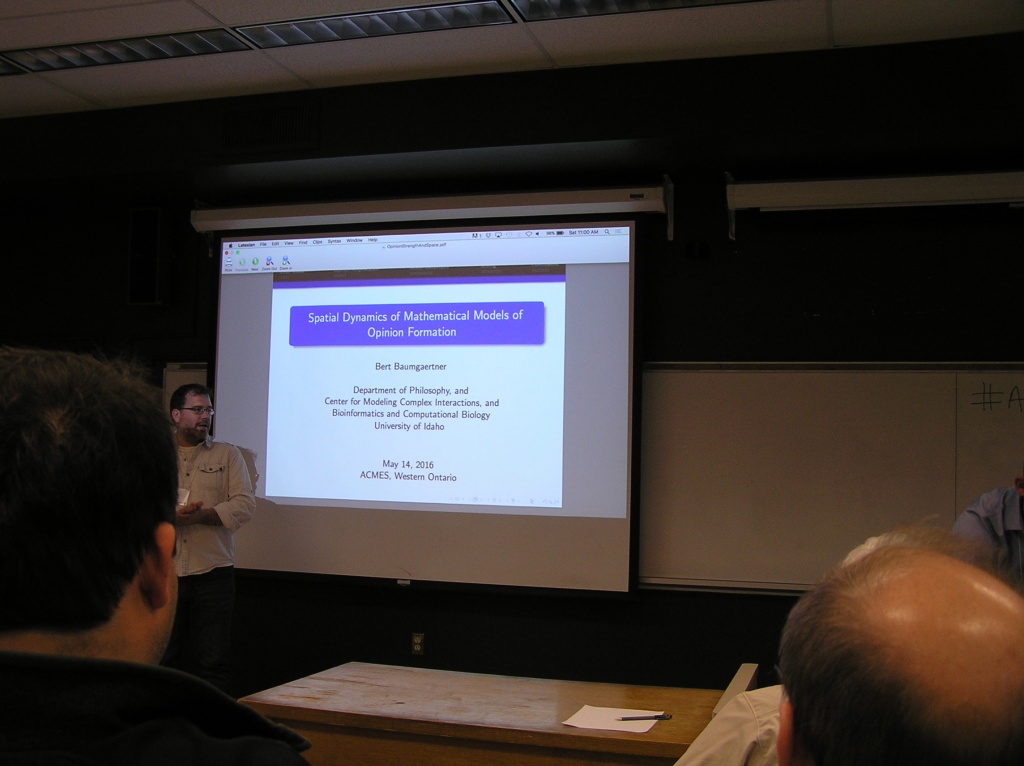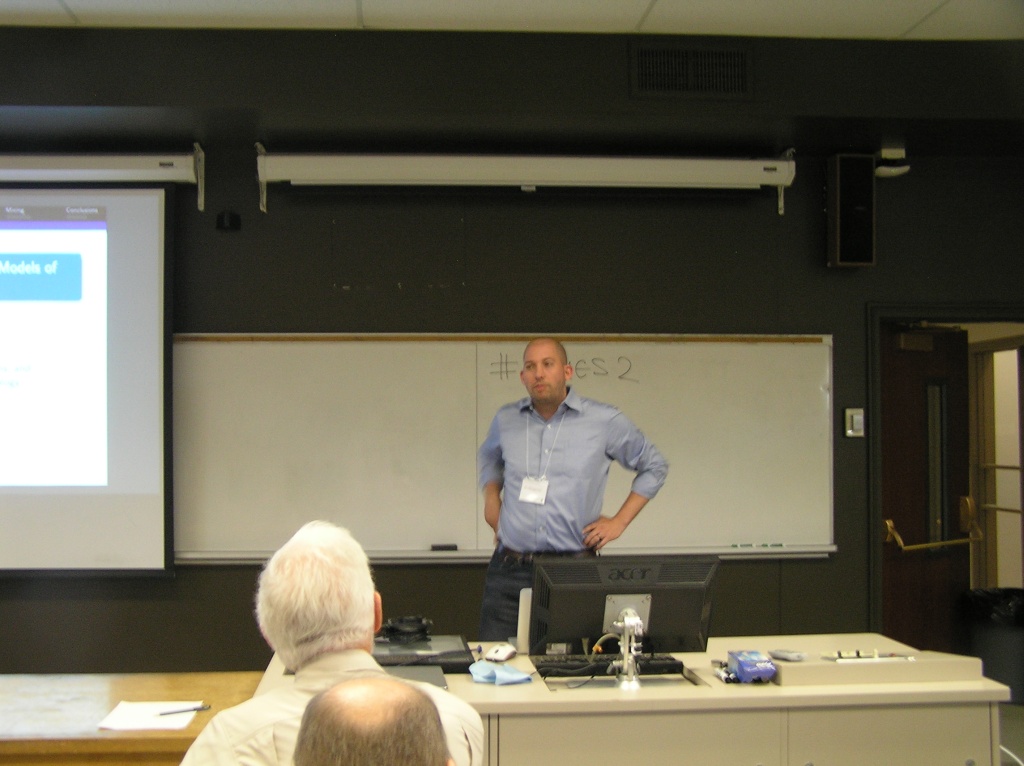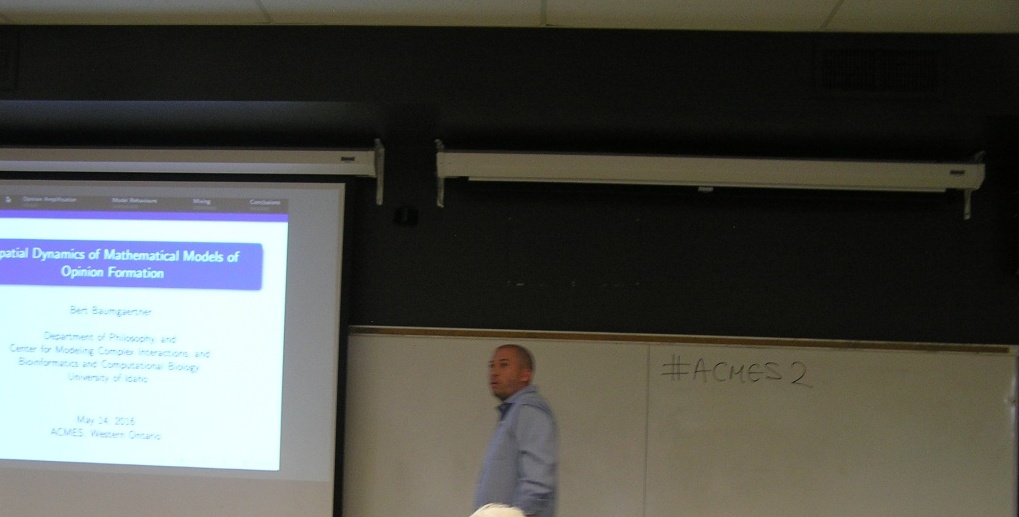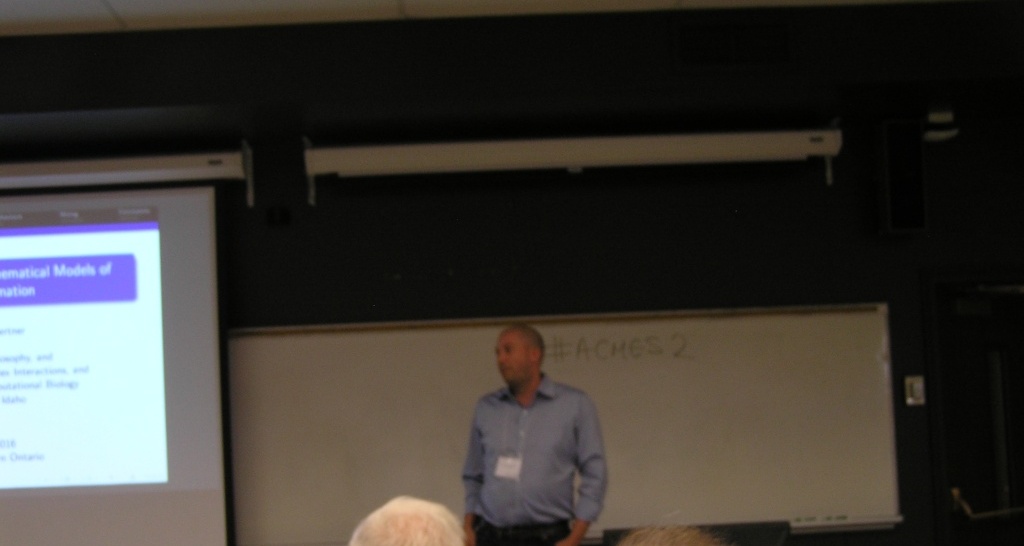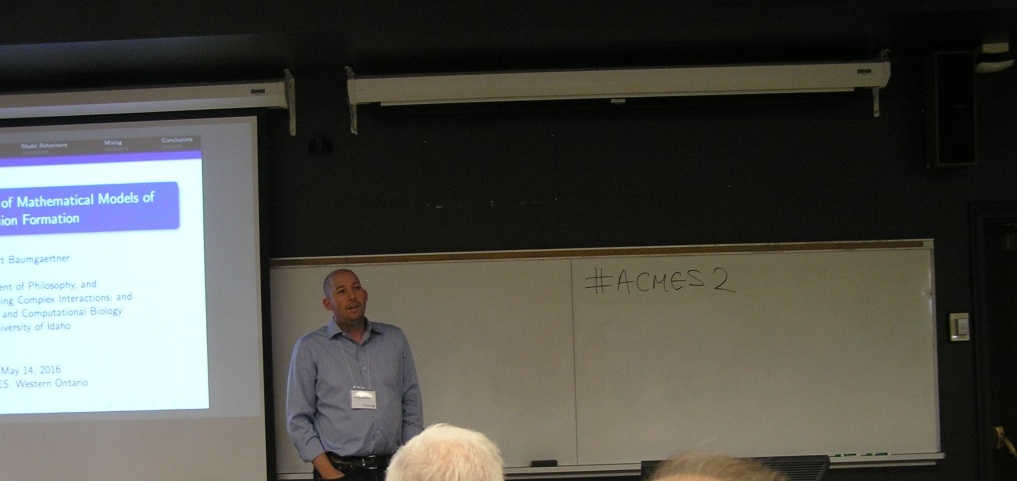Bert Baumgaertner, Department of Philosophy, University of Idaho
Spatial Dynamics of Mathematical Models of Opinion Formation
The Voter Model and variations of it are used to study the mathematical
principles of opinion dynamics. Common aims in this area include the calculation of the probability of reaching consensus, time to consensus, distribution of
cluster sizes, etc. We introduce a stochastic spatial agent-based model of opinion dynamics that includes a spectrum of opinion strengths and various possible
rules for how the opinion type and strength of one individual affect the influence
that individual has on others. Through simulations of the model, we find that
even a small amount of amplification of opinion strength through interaction
with like-minded neighbors can tip the scales in favor of polarization and dead-
lock. Moreover, the spatial patterns that emerge and their dynamics resemble
surface tension and motion by mean curvature. While these are also observed
in the Threshold Voter Model, their emergence is the result of a very different
mechanism. Finally, we compare the time dynamics of our spatial model with
an ODE version.
